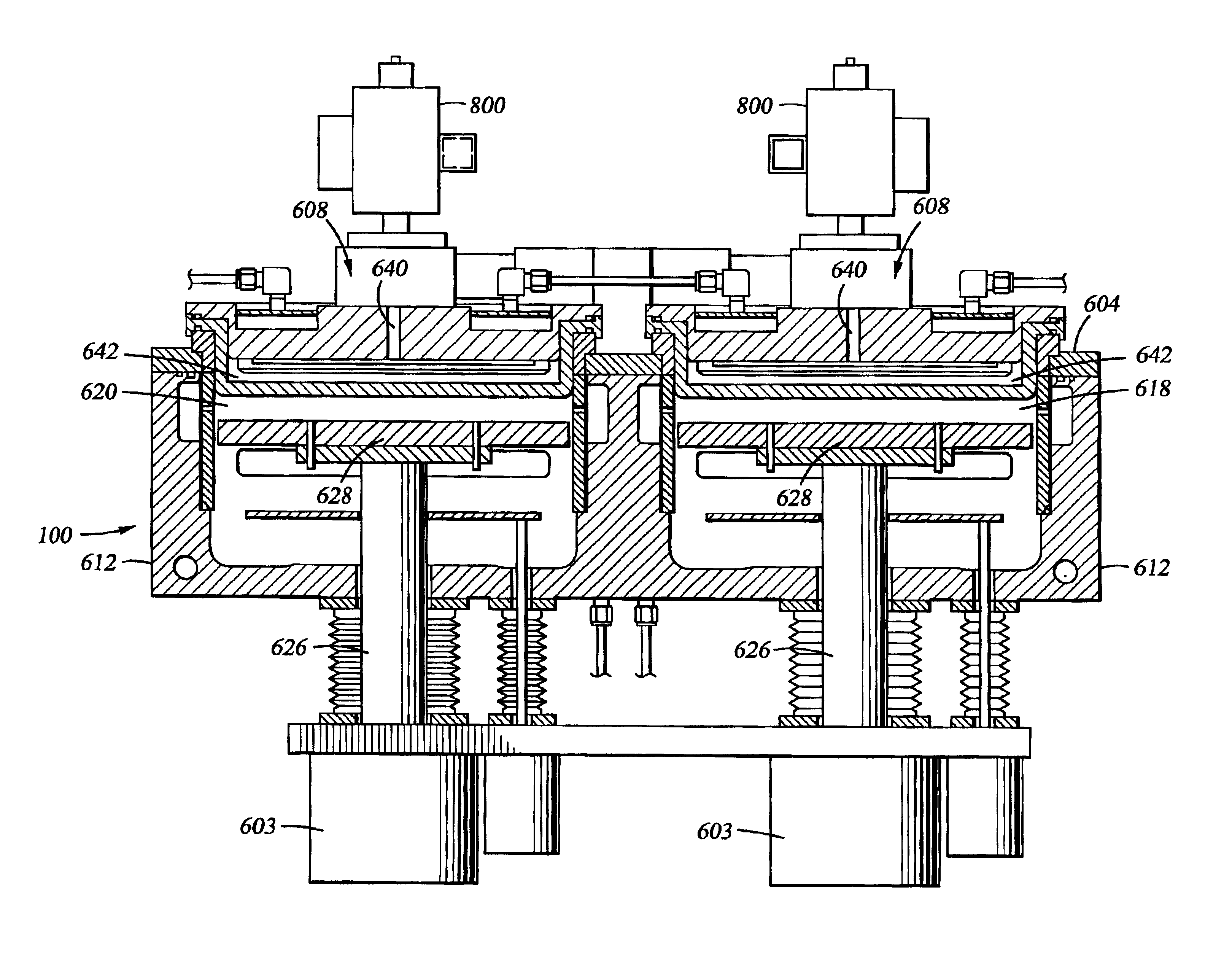Method for cleaning a process chamber
a technology of process chamber and cleaning method, which is applied in the direction of cleaning hollow objects, cleaning using liquids, coatings, etc., can solve the problems of reducing the number of substrates that can be processed, requiring more time to clean the chamber, and consuming tim
- Summary
- Abstract
- Description
- Claims
- Application Information
AI Technical Summary
Problems solved by technology
Method used
Image
Examples
example 1
[0028]Several hundred sccm of argon was flowed for about two seconds to strike a plasma in two remote plasma sources, model number 5707024-F from Advanced Energy Industries, Inc., connected to a processing region of a Producer® Chamber having experienced a deposition of about 1 μm of Black Diamond™ film, a silicon oxycarbide film available from Applied Materials, Inc. of Santa Clara, Calif., deposited on a substrate within the chamber. NF3 was also introduced into the remote plasma sources. After the plasma was struck, the remote plasma sources delivered about 6 kilowatts of power to the struck plasma. The plasma included free radicals from the NF3. The NF3 was flowed into a processing region of the deposition chamber at a rate of about 900 sccm. Helium was flowed from a separate gas line into the processing region at a rate of about 500 sccm. A radio frequency power of about 250 Watts was delivered to the processing region. The spacing between the electrodes, i.e., the showerhead a...
example 2
[0029]Several hundred sccm of argon was flowed for about two seconds to strike a plasma in two remote plasma sources, model number 5707024-F from Advanced Energy Industries, Inc., connected to a processing region of a Producer® Chamber. NF3 was also introduced into the remote plasma sources. After the plasma was struck, the remote plasma sources delivered about 6 kilowatts of power to the struck plasma. The plasma included free radicals from the NF3. The NF3 was flowed into the processing region at a rate of about 900 sccm. Helium was flowed from a separate gas line into the processing region at a rate of about 500 sccm. A radio frequency power of about 250 Watts was delivered to the processing region. The spacing between the electrodes of the processing region of the chamber was about 400 mils. The chamber was cleaned for about 140 seconds. The radio frequency power was terminated. The flow of helium into the deposition chamber was terminated. NF3 was flowed into the processing reg...
PUM
| Property | Measurement | Unit |
|---|---|---|
| power | aaaaa | aaaaa |
| power | aaaaa | aaaaa |
| power | aaaaa | aaaaa |
Abstract
Description
Claims
Application Information
 Login to View More
Login to View More - R&D
- Intellectual Property
- Life Sciences
- Materials
- Tech Scout
- Unparalleled Data Quality
- Higher Quality Content
- 60% Fewer Hallucinations
Browse by: Latest US Patents, China's latest patents, Technical Efficacy Thesaurus, Application Domain, Technology Topic, Popular Technical Reports.
© 2025 PatSnap. All rights reserved.Legal|Privacy policy|Modern Slavery Act Transparency Statement|Sitemap|About US| Contact US: help@patsnap.com


